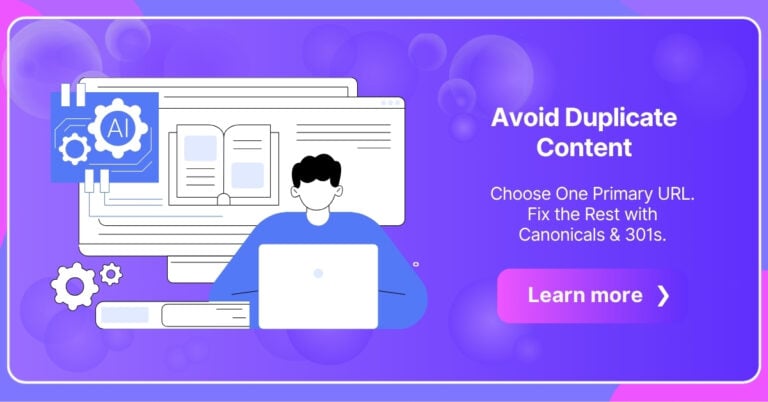If your AI drafts look convincing but you can’t prove a single claim, the fix isn’t “more model.” It’s evidence. This guide shows how to fact-check with AI using snippet blocks, dated stats, and canonical rules—so editors can verify in minutes, not days. Start building a corpus-first assistant that always shows citations: start your free trial (see pricing).
TL;DR
- Build answers from your sources; add dates and citations to every claim.
- Use snippet blocks (tight paragraph/list/table) for verifiable answers readers—and systems—can scan quickly.
- Control duplicates with canonicals/301s so facts resolve to one primary URL.
Why Snippet Blocks Matter
Short, self-contained snippets (a tidy paragraph, list, or table) force precision and make it easy to attach source citations and dates right where claims appear. They also mirror the formats search systems most often surface (e.g., paragraph and list featured snippets).
How to structure a snippet block
- Lead sentence answering the question in ≤50 words.
- 1–3 bullets or cells with the critical facts (each with a citation + date).
- One-liner caveat if the data varies by version/region.
Dates on Stats, Updates, and Methods
Dates turn claims into auditable statements. For articles, include datePublished and dateModified in structured data (BlogPosting/Article) and show the visible updated date on-page; this helps systems display the right byline date and sets expectations for freshness.
Editor checklist
- Add the source’s publication date after the claim (e.g., “(Smith, 2025-06-02)”).
- Prefer the latest credible stat; if none exists, say so.
- Update the page and log the change; keep dateModified current in markup.
Canonicals to Prevent Conflicting Claims
When multiple URLs say nearly the same thing, systems may split signals—and your team won’t know which page to fix. Choose one primary URL for each topic and point variants to it via rel=canonical (or 301 if you’re deprecating a page). Keep internal links and sitemaps aligned to the primary.
Quick rules
- 301 redirect when content truly moves/merges.
- rel=canonical when close variants must stay live (print pages, UTM versions, regional copies).
- Self-referencing canonicals on primaries; update the XML sitemap to list primaries only.
Claim Tables (Fast, Repeatable QA)
Turn each page’s assertions into a claim table your assistant can help fill:
| Claim | Source (URL + section) | Date | Status |
|---|---|---|---|
| “Model X supports 128k context.” | /docs/model-limits#context | 2025-06-02 | Verified |
| “Pricing is $Y per 1K tokens.” | — | — | Not in corpus (omit/add source and retry) |
This prevents “looks right” copy from shipping and trains your team to expect evidence-first writing. Pair with a short snippet block in the final draft so verification survives editing.
When to Use ClaimReview
If you publish a page reviewing someone else’s claim, you can add ClaimReview structured data to enable fact-check rich results. Use it only for bona fide fact-checks with a clear reviewed claim and rating—never as decoration.
A People-First Baseline
Keep the page useful and trustworthy: state purpose clearly, cite sources, and explain methods (how you gathered/verified data). This matches Google’s “helpful, reliable, people-first content” guidance—and gives readers confidence to act.
Mini Workflow (10 minutes per page)
- Extract claims (assistant lists facts/definitions/numbers).
- Retrieve passages from your corpus; attach citations + dates.
- Mark gaps with “Not in corpus” (don’t guess); add missing docs if needed and rerun.
- Consolidate URLs (pick the primary; set canonical/301).
- Write a snippet block (paragraph/list/table) with sources inline.
- Update Article markup (datePublished/dateModified, author).
FAQs: (Snippet Blocks, Dates, Canonicals)
How do snippet blocks help with accuracy?
They compress the answer into a scannable unit and force you to attach dates and citations where claims are made. This also mirrors common snippet formats (paragraph/list/table).
What date should I show—published or updated?
Show both on page (byline + last updated) and ensure datePublished anddateModified are accurate in Article structured data so systems can choose the right display date.
When should I use canonical vs 301?
Use 301 when retiring/moving a page; use rel=canonical when near-duplicate variants must remain accessible but you want signals consolidated to the primary URL. Keep internal links and the sitemap pointing at the primary.
Start verifying in minutes
Create a research assistant that answers only from your sources and always shows citations. It turns claim tables and snippet blocks into fixes you can trust. Start your free trial or compare plans: pricing.





